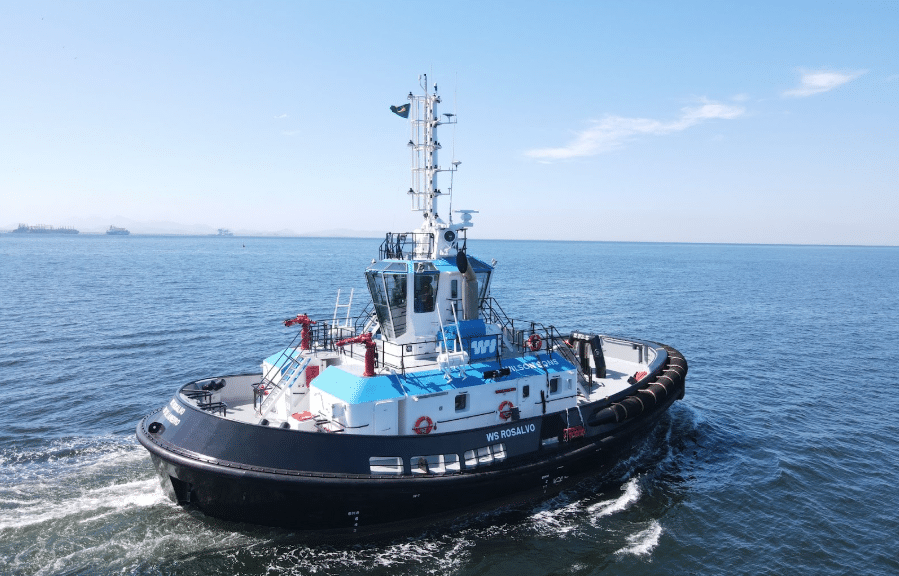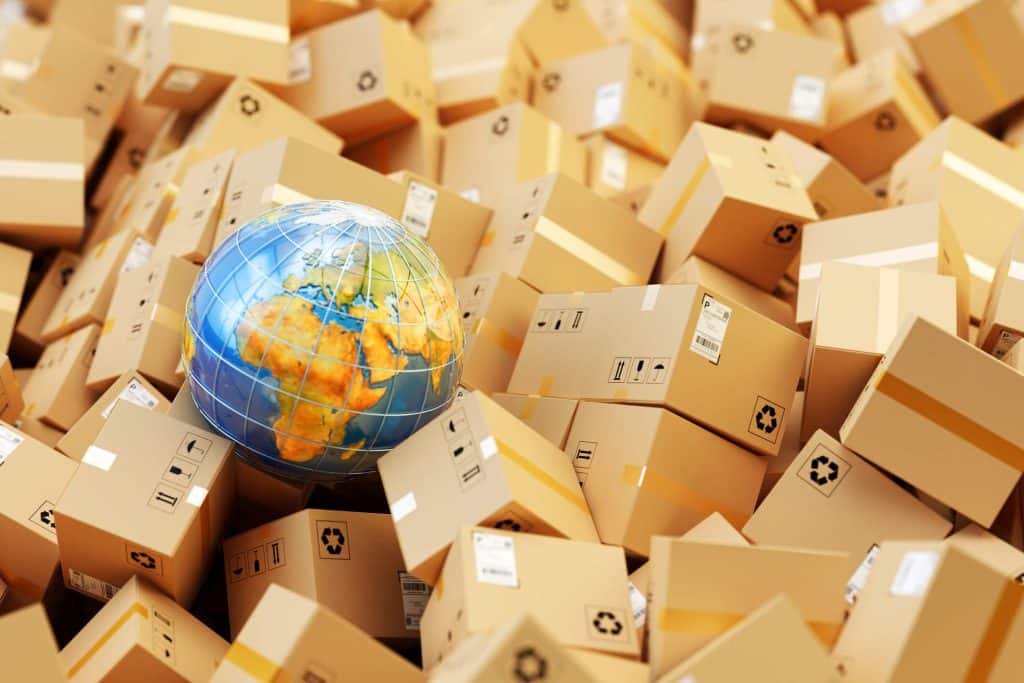Logistics Automation: The Present in Motion, the Future in Progress
In a global context where efficiency, connectivity, and sustainability are more than trends, Brazilian port logistics is evolving to a new stage of maturity. Driven by continued growth in foreign trade—which moved over 1.3 billion tons in 2024, according to the National Waterway Transportation Agency (ANTAQ)—Brazil is beginning to reposition itself strategically in the international […]
- 16/06/2025
- 7 minutes

In a global context where efficiency, connectivity, and sustainability are more than trends, Brazilian port logistics is evolving to a new stage of maturity.
Driven by continued growth in foreign trade—which moved over 1.3 billion tons in 2024, according to the National Waterway Transportation Agency (ANTAQ)—Brazil is beginning to reposition itself strategically in the international market. In this new cycle, automation is emerging as one of the main drivers of operational and cultural transformation.
With increasingly integrated global markets, the ability to generate value has become essential. “We are at an inflection point. The sector is being reshaped by technologies that make operations safer, more connected, and more predictable. But this transformation requires strategic vision, continuous investment, and, most importantly, qualified professionals,” says Giovanni Phonlor, Operations Director at the Tecon Rio Grande division of Wilson Sons.
At the container terminal operated by Wilson Sons in southern Brazil, this vision is already becoming a reality. Electronic truck scheduling systems, automated access control, real-time tracking sensors, and integrated dashboards have improved the terminal’s operational responsiveness and efficiency. “Today, we can anticipate demand and allocate resources with agility, making decisions based on concrete data. This completely changes the operational logic.”
Beyond operational advances, the executive sees a broader strategic horizon: transforming the Southern Cone of Latin America into a world-class logistics platform through digital tools. “Automation is no longer part of the future—it is a reality in the present.” Read the full interview below.
Automation as a Solution
lthough the Ministry of Ports and Airports (MPOR) reported a growth of more than 7.5% in Brazilian container terminals in 2023, Brazil still faces historic logistical bottlenecks. According to consulting firm Bain & Company, the country loses over US$2.3 billion annually due to logistical delays and demurrage costs, for example. In this context, automation is not just a strategic choice—it’s an operational necessity.
“Operational improvements, although technically sophisticated, are only possible when corporate strategy, a culture of innovation, and skilled teams come together. That’s the triad guiding Wilson Sons’ transformation,” Phonlor explains, highlighting the company’s strong commitment to this agenda. “The logistics of the future are driven by data analysis, strategic thinking, and adaptability.”
Strategically located, Tecon Rio Grande can handle 1.4 million TEUs (twenty-foot equivalent units) and accommodate Neo-Panamax vessels with its 900-meter berth. Since 2016, Wilson Sons has made significant technology investments at the Rio Grande terminal, positioning it as the most automated in the country and the best transshipment alternative for the Southern Cone of Latin America. Gate, berth, container inspection, and administrative processes are among the activities with high automation levels:
“Our latest milestone was berthside automation, where we implemented AI systems with OCR (Optical Character Recognition) to confirm containers onboard and on terminal tractors. Currently, only two terminals in Brazil operate at this automation level, and Tecon Rio Grande is one of them.”
This development also brings operational safety benefits, protecting workers who previously had to verify container data manually in the yard. “Even with all available safety measures, our commitment is to go further, using technology to provide even more care and protection for our employees and partners,” says the executive.
Training has been the key for employees to keep up with the transformations of so-called Logistics 4.0. Interestingly, in a sector marked by generational diversity, the response to new technologies has been positive—regardless of whether it’s from younger or more experienced workers.
“When we speak with veteran operators, some with over 20 years of experience, we see no resistance to adopting new technologies. On the contrary, they’re excited and adapt easily, as they see how technology can improve their working conditions.”
These automation and operational efficiency advances at Tecon Rio Grande also translate into concrete sustainability results. By reducing vessel turnaround times and optimizing cargo handling processes, the technologies help lower fuel consumption and, consequently, greenhouse gas emissions. “We are at an inflection point. The sector is being reshaped by technologies that make operations safer, more connected, and more predictable,” says Phonlor.
The adoption of 100% renewable energy, certified by the international I-REC standard, has also been essential in offsetting the terminal’s electricity-related emissions. Initiatives such as installing solar panels, fully modernizing lighting systems with LED technology, and real-time equipment monitoring ensure a lower environmental impact, aligned with a zero-carbon strategy. Combined, these efforts are creating a new model of port operation: safer, more efficient, and environmentally responsible.
A New Ambition for Brazilian Logistics
Beyond technical and operational advances, Wilson Sons envisions a broader strategic future—transforming the Southern Cone into a world-class logistics platform. With a privileged location, expanding intermodal connections, and growing commercial synergies with markets such as the U.S., Europe, and China, southern Brazil could become a key link between Latin American production and global trade, aggregating cargo from Argentina and Uruguay.
Tecon Rio Grande plays a central role in this transformation. With robust infrastructure, a highly trained team, and advanced digital integration, the terminal has all the necessary conditions to become a high-performance import and export hub, innovating Brazil’s global trade connections. “We run an operation that combines technical capacity, analytical intelligence, and execution agility. We’re ready to increase our regional relevance and attract new cargo flows,” explains Phonlor.
Private investment has been matched by a public sector more open to innovation. In 2024, the Federal Government announced a new National Logistics Plan focused on reducing port bureaucracy and expanding the digital connectivity of terminals. Integration between the Federal Revenue Service, ANTAQ, shipping lines, and private operators is becoming a critical factor for Brazil to compete on equal footing with major global hubs like Rotterdam, Shanghai, or Singapore.
“We are building a logistics system that is safer, smarter, more sustainable, and more connected. Automation is part of this, but what drives us is the purpose of delivering value with excellence. And that’s only possible when technology and people move forward together.”
This integrated vision—connecting operational efficiency, social and environmental responsibility, innovation, and human talent—has been guiding Wilson Sons’ actions across Brazil. With one of the largest tugboat fleets in Latin America and consolidated operations in southern and northeastern terminals, offshore services, and integrated logistics, the company is positioning itself as a key player in the new port economy. The future of logistics is already in motion, and within it, the present of automation is gaining scale and depth, Phonlor affirms:
“Automation is no longer a future concept—it is a present reality. And for it to generate lasting impact, we need a clear vision of its role not just as a productivity tool, but as a cornerstone of a smarter, more prepared logistics ecosystem.”






